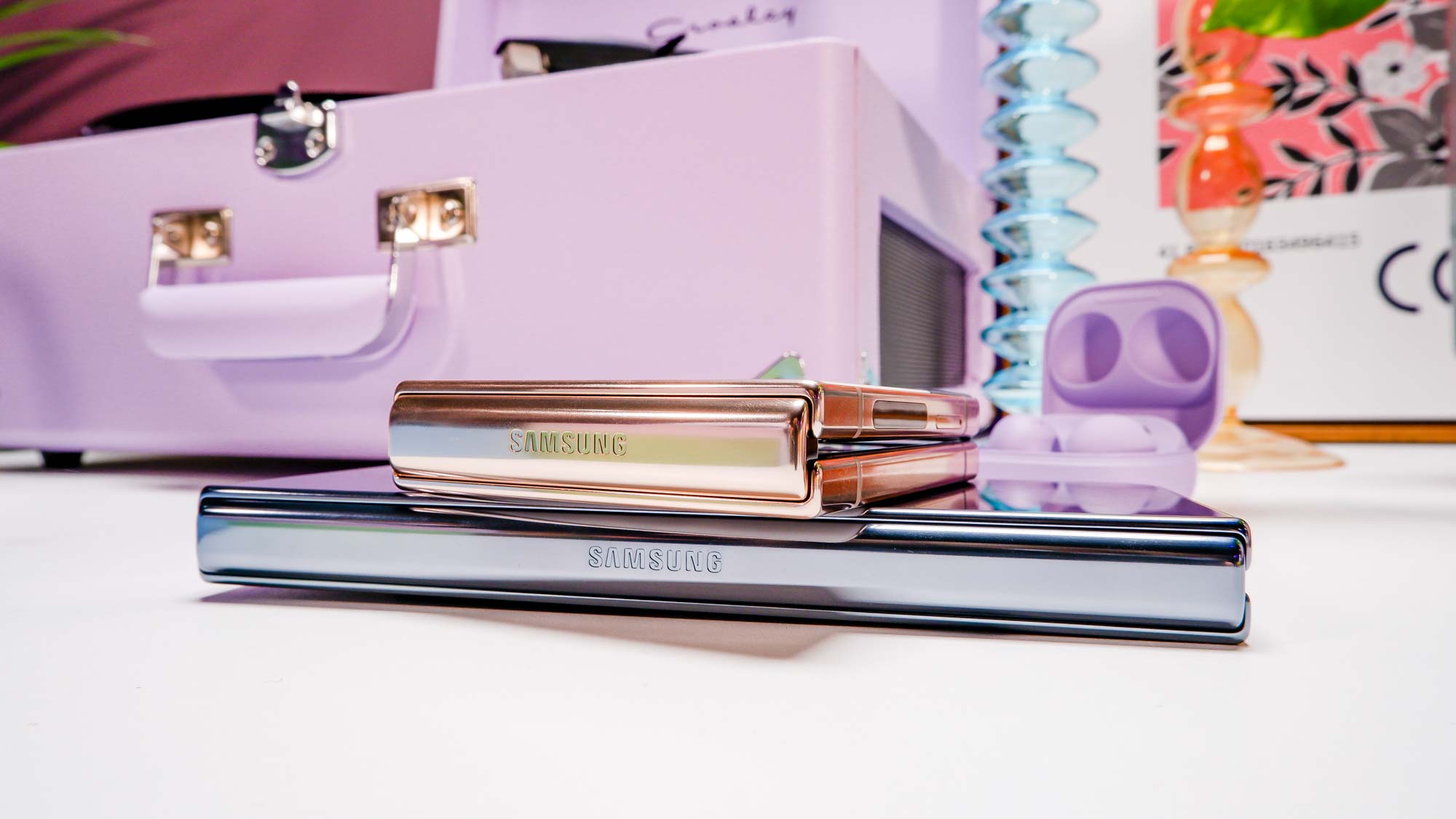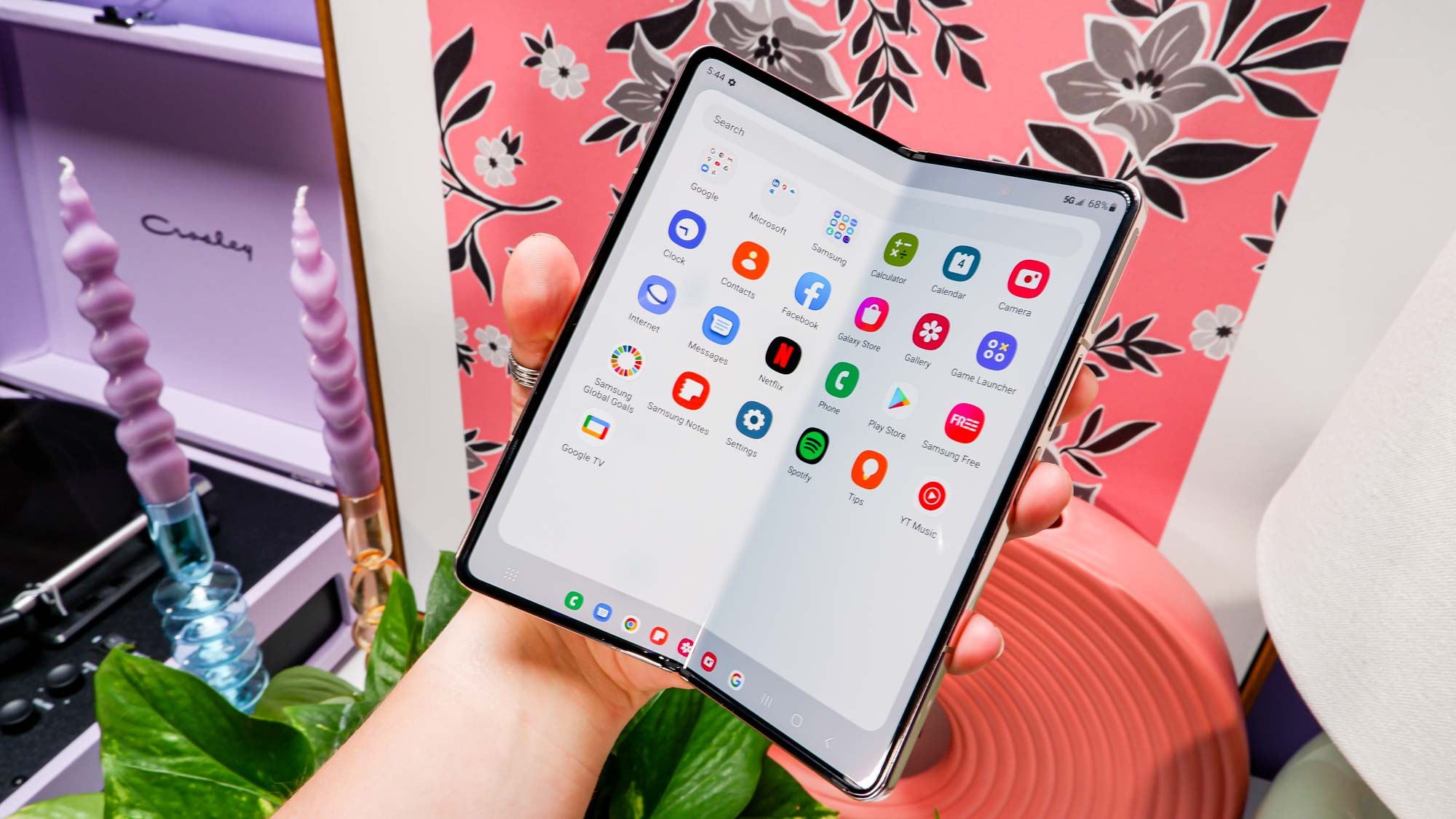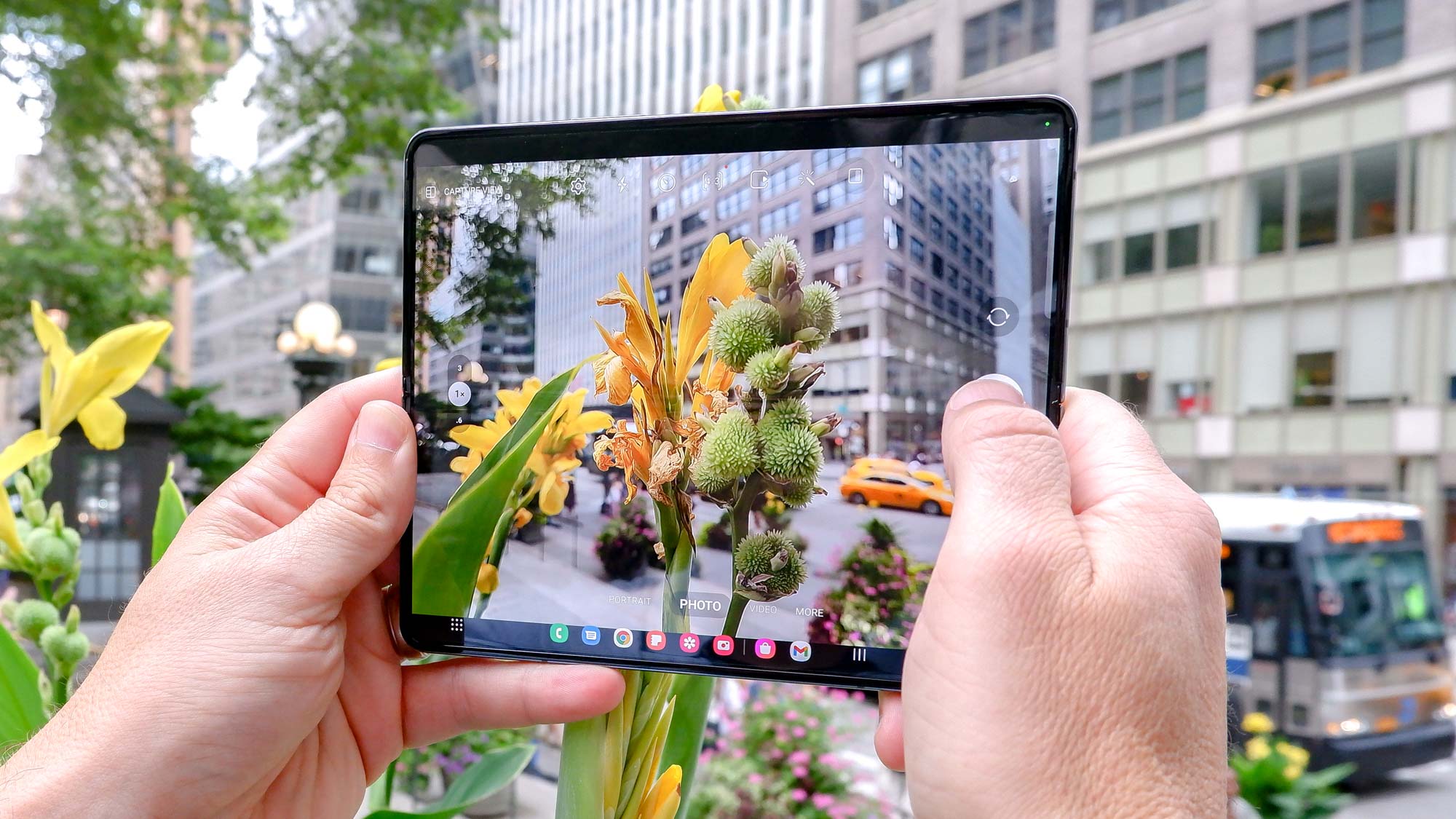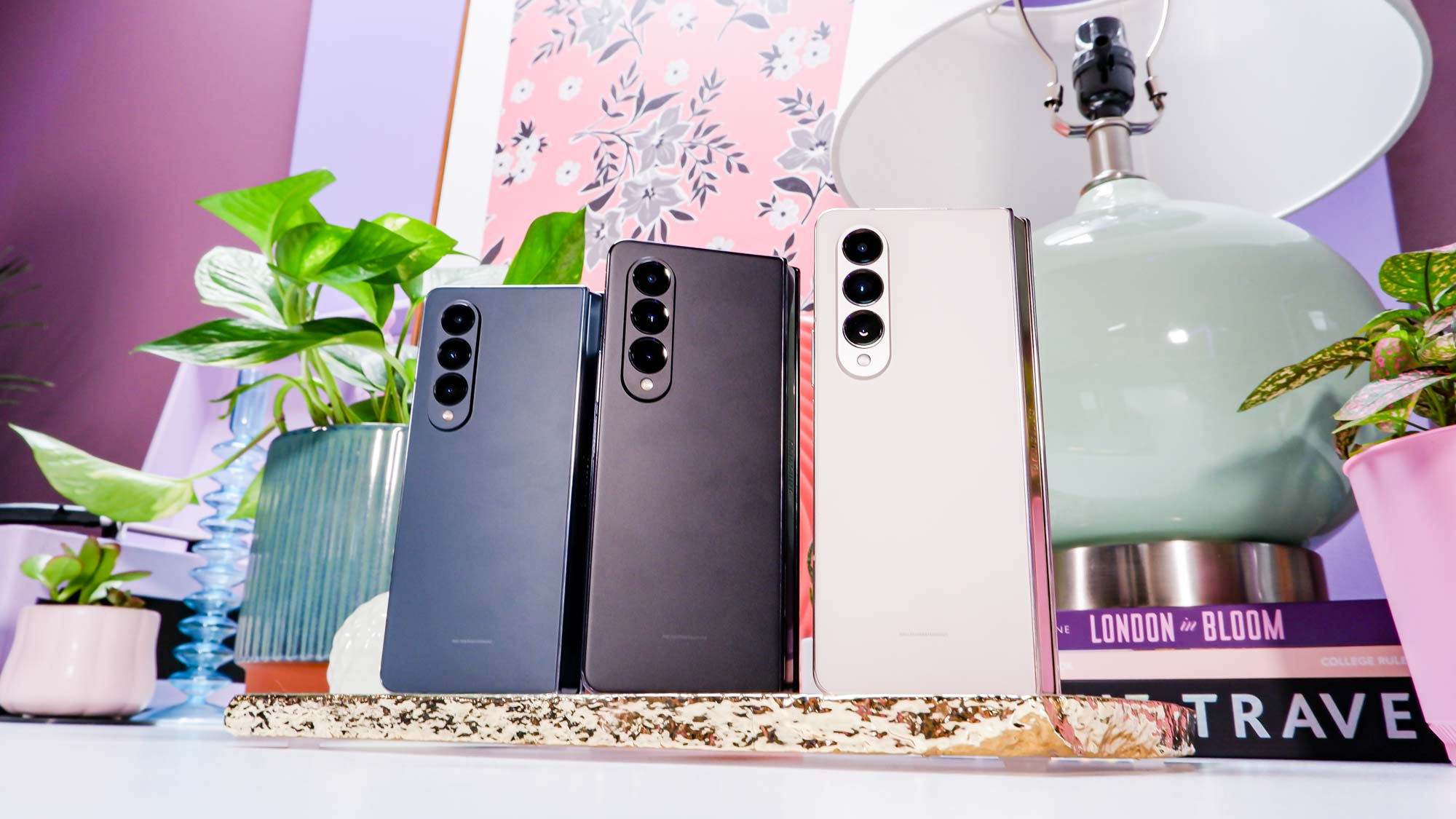Samsung Galaxy Z Fold 4 and Galaxy Z Flip 4 — is it time to get a foldable?
Here's why it's time to buy one of Samsung's new foldable phones — and why you should skip them

Samsung's new foldables hit the market today (August 26), with both the Galaxy Z Fold 4 and Galaxy Z Flip 4 ready to purchase at a retailer or wireless carrier near you. But just because the phones are now available doesn't mean that you're ready to buy these particular models.
Though foldable phones have been part of the smartphone market since 2019 — the year the original Galaxy Z Fold made its debut — they remain something of a niche product. Samsung is hoping to change that. The latest models improve upon their predecessors, as our Galaxy Z Fold 4 review and Galaxy Z Flip 4 review both detail. And even before the phone's launch this month, TM Roh, Samsung's president and head of its mobility business, declared that foldable devices were going to enjoy a mainstream moment.
"We are reaching the moment where these foldable devices are becoming widespread and staking a bigger claim in the overall smartphone market," Roh wrote in a blog post.
Are the Galaxy Z Fold 4 and Galaxy Z Flip 4 the phones to stake that bigger claim? More significantly, have they earned a folded-up spot in your pocket? There are plenty of reasons to order either phone, depending on whether you prefer the Galaxy Z Fold 4's expansive screen or the Galaxy Z Flip 4's flip phone-style design. But a few lingering concerns may give you reason to hold out on this year's models.
Based on our time with both the latest Galaxy Z Fold and Galaxy Z Flip models, here's a look at the pros and cons of Samsung's foldables.
Why you should get the Galaxy Z Fold 4 or Galaxy Z Flip 4
As we mentioned, either one of Samsung's new foldable devices can point to a number of improvements, from the exterior of the phone to beefed-up specs, that make the Galaxy Z Fold 4 and Z Flip 4 big upgrades over whatever handset you happen to carry around now.
A redesigned hinge: Samsung uses a slimmer, lighter hinge on the Galaxy Z Fold 4 and Galaxy Z Flip 4, which contributes to an overall improved design for both devices. You may not notice much of a difference on the Z Flip 4 compared to its predecessor, which already slipped easily into a pocket, but the impact is felt on the Galaxy Z Fold 4. While that larger foldable remains a fairly substantial device, it's not as bulky as before, and every little bit of polish helps.
Get instant access to breaking news, the hottest reviews, great deals and helpful tips.

A more powerful processor: Each new foldable phone runs on the Snapdragon 8 Plus Gen 1, the best system-on-chip available for Android phones these days. Get either the Galaxy Z Fold 4 or Galaxy Z Flip 4, and you'll wind up with a device that can handle demanding apps and multitasking with ease.
When we benchmarked the new foldable phones, both posted better numbers on the whole than Galaxy S22 devices that make up Samsung's current flagship offerings. All three S22 models run on the Snapdragon 8 Gen 1, which isn't quite as powerful or power-efficient as the newer 8 Plus Gen 1 silicon. Yes, the A15 Bionic inside the iPhone 13 lineup still produces better overall numbers than any of Samsung's phones, but if you want the best-performing Samsung device, either the Galaxy Z Fold 4 or Galaxy Z Flip 4 would fit the bill.
Better battery life than before: The battery life on the Galaxy Z Flip 3 was so poor, it prevented us from being more enthusiastic when recommending last year's flip phone. Thanks to a slightly larger power pack, and the improvements in the Snapdragon 8 Plus Gen 1 chipset, the Galaxy Z Flip 4 turns in a more respectable time on our battery test. It's still around 90 minutes shy of the average smartphone, but it's leagues better than the Z Flip 3's battery life.

Likewise, the Galaxy Z Fold 4 was able to last longer on a charge, even though its battery size didn't change from the previous model. The Z Fold 4 still fares better when its adaptive display rate feature is turned off, but Samsung's foldables are certainly moving in the right direction when it comes to battery life.
And that's important if the company really wants to meet that goal of turning foldables into mainstream devices. One of the most important factors in deciding which smartphone to buy is how long it can hold a charge. As Samsung's foldables get closer to average performance for handsets with more conventional designs, they become an easier sell to wary consumers.
Better multitasking features: A big argument in favor of foldable phones is the fact that you can take advantage of the added screen real estate to tackle the kind of tasks you normally need a tablet or laptop for while still enjoying the portability of a smartphone. That argument is certainly in evidence on the Galaxy Z Fold 4, which takes advantage of Android 12L's features aimed at big-screen devices to bolster your productivity.

We're particularly impressed with the addition of a new Taskbar at the bottom of the Galaxy Z Fold 4 screen that shows recent apps. As before you can run up to three apps at the same time, easily dragging and dropping content between the open windows.
The Galaxy Z Flip 4 is less of a multitasking marvel, but it still offers features that take advantage of its foldability. Flex Mode is a returning feature where half of the Z Flip's screen becomes a control panel. Samsung expanded Flex Mode to more apps on the Galaxy Z Flip 4, with Flex Mode now adding new controls to Instagram Reels, TikToks, videos and vlogs.
Camera improvements, particularly for the Fold: Foldable phones are not exactly known for their powerful cameras, though this round of devices from Samsung might take a big step toward changing that impression. The changes aren't as much in evidence on the Galaxy Z Flip 4, though the phone's Night Mode did stand out in our testing. Rather, it was the Galaxy Z Fold 4 that put the focus on better camera hardware.

Specifically, the new foldable features a 50MP main camera that's more in line with the camera array you'd find on devices like the Galaxy S22. The result is that the Galaxy Z Fold 4 could hold its own with the best camera phones in our testing, even producing better shots than the iPhone 13 Pro Max in a few instances. People are still likely to buy foldable phones for reasons other than their picture-taking abilities, but the Galaxy Z Fold 4 at least indicates that this isn't an area where you need to make compromises in exchange for a folding device.
Why you should skip the Galaxy Z Fold 4 or Galaxy Z Flip 4
Let's be clear — both of these devices rank among the best foldable phones available, and they're clear improvements over the last generation of foldables from Samsung. But flaws remain that have more to do with the foldable market itself.
There's still a visible crease on the display: The fact is that if you make a display fold in two, there's going to be a crease left at the hinge. Rumors leading up to Samsung's new foldables suggested the crease would be less visible, but that's simply not the case now that we have the phones in hand. On the Galaxy Z Fold 4, it's quite visible as a matter of fact, particularly in apps like Google Maps or in direct sunlight. The inner display has a 21.6:18 aspect ratio, which is almost a square and is one of the primary reasons the Galaxy Z Fold 4 falls flat as a gaming phone as games usually have a widescreen-style 19:9 ratio.

The crease doesn't make either the Z Fold 4 or Z Flip 4 any less useable. Rather, the problem is an aesthetic one, because when you're paying this much for a phone, you want it to look flawless.
The price remains the same: And that gets to the biggest drawback with the Galaxy Z Fold 4 and Galaxy Z Flip — they remain quite expensive phones.
That's true even of the Galaxy Z Flip 4, which can at least lay claim to costing less than $1,000. But it was last year's Galaxy Flip model that broke the $1,000 threshold — the Z Flip 4 costs the same $999. And for that kind of money, you can get yourself a pretty powerful flagship device without the Flip's limitations.

The Galaxy Z Fold 4 also costs as much as its predecessor, and that's an astronomical $1,799. The upcoming iPhone 14 Pro models are expected to get a $100 price increase, and even if that rumor pans out, the more expensive iPhone 14 Pro Max model would still cost $600 less than what Samsung charges for its foldable.
Samsung can talk all it wants about the move to make foldable phones mainstream, but until those prices drop from their current levels — particularly in the case of the Fold — these are going to remain niche devices.
Galaxy Z Fold 4 and Z Flip 4: Buy or skip?
Even with all the improvements to Samsung's foldable lineup this year, the calculations in deciding whether to pay up for a foldable phone remain unchanged from before. The biggest advantage foldables have is their additional screen space. If a bigger display appeals to you — and if you can afford the premium price — the Galaxy Z Fold 4 and Galaxy Z Flip 4 merit some consideration.
But that price is a very high hurdle for people to get over, especially when extremely capable phones — even ones from Samsung — cost hundreds of dollars less. We appreciate the better cameras on the Galaxy Z Fold 4 and the other improvements Samsung has made to both new models, but at the end of the day, price is going to determine just how popular these foldable handsets prove to be.
Next: You can check out our guide to the best Samsung Galaxy Z Fold 4 cases if you're planning to get Samsung's new foldable. In case you just got a Samsung Galaxy Z Fold 4 — these are the 9 features you need to set up first.
Philip Michaels is a Managing Editor at Tom's Guide. He's been covering personal technology since 1999 and was in the building when Steve Jobs showed off the iPhone for the first time. He's been evaluating smartphones since that first iPhone debuted in 2007, and he's been following phone carriers and smartphone plans since 2015. He has strong opinions about Apple, the Oakland Athletics, old movies and proper butchery techniques. Follow him at @PhilipMichaels.

